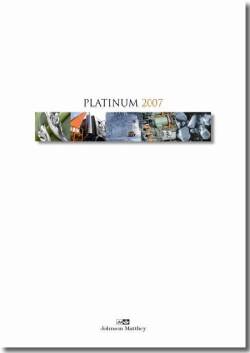Rhodium and iridium compound used in heavy electron behavioural study - 2nd November 2007

Read more about the platinum group metals markets in Johnson Matthey's bi-annual reviews click here.
US
researchers claim to have uncovered clues as to how superconductivity
works using a metallic crystalline compound of rhodium, iridium,
indium, cobalt and cerium to observe heavy electron behaviour.
The
team at Rutgers University, New Jersey, claims that by using these
materials they were able to observe in greater detail how electrons
become one thousand times larger in certain metal compounds when at
temperatures near absolute zero, sciencedaily.com reports.
The
development was enabled by the use of cerium-based compounds, which due
to their lack of dopants, made study of electron behaviour easier than
had been the case in previous experiments conducted with
superconducting materials called cuprates.
Kristjan Haule,
Assistant Professor of Physics and Astronomy at the facility, said:
"The new compounds are for us what fruit flies are for genetics
researchers. Fruit flies are easy to breed and have a simple gene
makeup that's easy to change.
"Likewise, these compounds are
easy to make, structurally straightforward and adjustable, giving us a
clearer view into the many properties of matter that arise at low
temperatures.
He added: "For example, we can use a magnetic
field to kill superconductivity and examine the state of matter from
which superconductivity arose."
Professor Haule was assisted in
his research by Gabi Kotliar, Board of Governors Professor of Physics
in the School of Arts and Sciences at Rutgers University and Ji-Hoon
Shim, a postdoctoral student.
Source:
How Electrons 'Gain Weight' In Metal Compounds Near Absolute Zero, 01/11/07
http://www.sciencedaily.com/releases/2007/11/071101144954.htm
© Adfero Ltd


